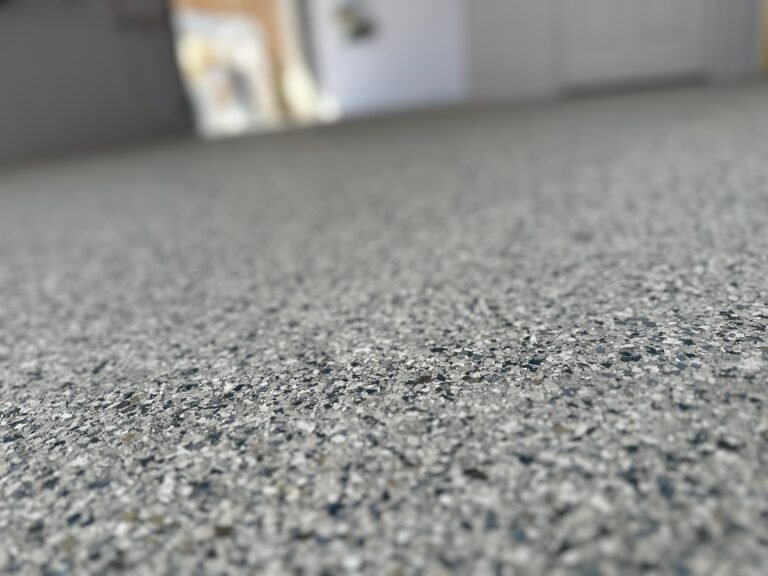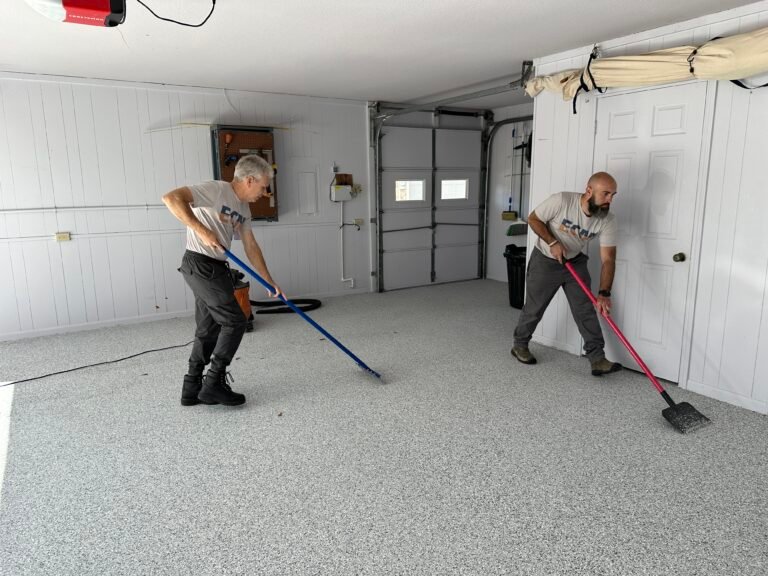Can I Get an Epoxy Driveway in East Texas?
Searching for “epoxy flooring for my driveway” is common among East Texas homeowners looking to upgrade curb appeal. But is epoxy suitable for outdoor surfaces like driveways and walkways, given our humid, sun-drenched climate? Below, we’ll explore common myths vs. facts about an epoxy driveway, highlight why polyaspartic might be a stronger candidate, and show how a quartz finish can be ideal for heavy-traffic outdoor areas.
Myth #1: Epoxy Is Perfect for Any Outdoor Concrete
Fact: Traditional epoxy isn’t always recommended for outdoor use, especially under intense UV exposure.
Explanation: Epoxy can yellow or chalk when regularly exposed to sunlight, a significant drawback for an East Texas driveway that bakes under the sun for hours daily. That said, some advanced epoxy blends include UV inhibitors – but even then, performance can be hit-or-miss outdoors.
Tip: If you want the look of an epoxy driveway without the issues, consider a polyaspartic alternative. It has UV blockers, faster cure times, and a track record of success in outdoor environments.
Myth #2: An Epoxy Driveway Will Withstand Vehicle Traffic Better Than Other Options
Fact: While epoxy is known for chemical resistance, repeated heavy loads and hot tires can cause peeling or softening in certain epoxy formulations.
Additional Context: Polyaspartic or quartz coatings tend to offer superior bond strength and flexibility, allowing them to handle temperature swings and tire friction more reliably. This is crucial in Tyler or Bullard, where blazing summers can heat the concrete drastically.
Myth #3: All Epoxy Coatings Are the Same
Fact: Quality, thickness, and whether it’s part of a multi-layer system vary greatly. Not every “epoxy” is created equal.
Detail: A high-grade professional epoxy system (possibly with a UV topcoat) might perform decently, but that’s typically more expensive – and you may still face color fading down the line. Meanwhile, polyaspartic usually includes strong UV inhibitors by default.
Insight: For an outdoor space like a driveway, investing in a premium product is essential – cheaper epoxies are prone to fail under East Texas conditions.
Myth #4: DIY Epoxy Kits Are Fine for Driveways
Fact: Most DIY kits aren’t designed for heavy outdoor use. They lack robust UV protection and typically come with minimal surface prep instructions.
Reason: Proper driveway coating demands mechanical grinding or shot-blasting for a strong bond. Skipping this step often leads to premature peeling, especially under the stress of vehicles.
Considering Polyaspartic or Quartz for Your Driveway
If you’re set on a decorative coating for your driveway but want reliability:
- Polyaspartic
- UV Stable: Resists yellowing in direct sun.
- Fast Cure: Often ready for foot traffic within hours; vehicles around 48hours.
- Versatility: Accepts flake or quartz finishes for added traction.
- Quartz Coatings
- Outdoor Durability: Ideal for driveways, patios, or pool decks.
- Added Traction: Granular texture helps provide additional traction in wet conditions.
- Aesthetic: Various color blends to match landscaping or home exteriors.
Wrapping Up: Is Epoxy a No-Go for Driveways?
- Short Answer: Standard epoxy isn’t the best fit for high-traffic, sun-exposed areas.
- Longer Explanation: While you can find specialized epoxy formulations with enhanced UV blockers, they may cost as much as (or more than) polyaspartic—yet still have limitations. Opting for polyaspartic or a quartz-based system is often more cost-effective in the long term.
Final Note: For East Texas driveways, investing in a UV-resistant coating designed to endure harsh sunlight, heavy vehicles, and temperature swings pays off. Contact Epoxy Coat Masters to learn how we prep, apply, and finalize driveways with polyaspartic or quartz – so you get the look you want without premature fading, cracking, or peeling.







